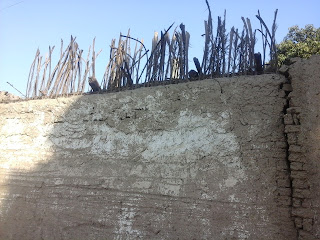I am sure we have noticed the curved bit at the top of a pylon. Where did this idea come from?
This example from Philae shows the curve on top of the pylon and the gateway.
This example is a false door of Tuthmosis III at Medinet Habu and this gives us a big clue with the reproduction of organic elements in the stone.There are other example of stone reproducing organic elements of architecture.at Sakkara for example and other false door examples with rolls at the top of the opening. Ancient Egyptians were very fond of reproducing organic elements in stone representations. So back to our pylon.
Around Egypt you will find fronds stuck in the top of mud brick walls, like this example. This is the explanation of the curved top.













0 comments:
Post a Comment